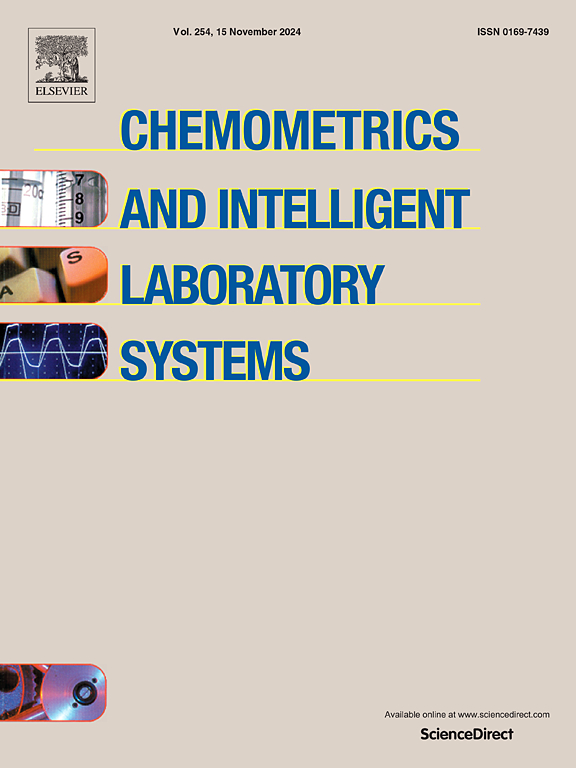Layer-wise-residual-driven approach for soft sensing in composite dynamic system based on slow and fast time-varying latent variables
IF 3.7
2区 化学
Q2 AUTOMATION & CONTROL SYSTEMS
Chemometrics and Intelligent Laboratory Systems
Pub Date : 2024-10-09
DOI:10.1016/j.chemolab.2024.105245
引用次数: 0
Abstract
Driven by the requirements for a comprehensive understanding of composite dynamic systems in industrial processes, this paper investigates a new soft sensor for quality prediction based on slow and fast time-varying latent variables extraction using layer-wise residuals. First, the slow feature partial least squares were expanded into long-term dependency by introducing explicit expressions of the potential state of the process into the objective function. Then, the multilayer regression model for exploring composite dynamics driven by layer-wise residuals is developed using a serial structure that can extract both slow and fast time-varying latent variables that are completely orthogonal. Finally, the exponential-weighted partial least squares are proposed for extracting fast time-varying dynamic latent variables by learning the exponential decay properties of the time-series data correlation. Case studies on the industrial debutanizer and sulfur recovery unit show that the prediction accuracy of the proposed approach outperforms traditional methods.
基于慢速和快速时变潜变量的复合动态系统软传感分层-残差驱动方法
为了全面了解工业流程中的复合动态系统,本文研究了一种基于慢速和快速时变潜变量提取的新型质量预测软传感器。首先,通过在目标函数中引入过程潜在状态的明确表达式,将慢速特征偏最小二乘法扩展为长期依赖性。然后,利用序列结构开发了用于探索由层向残差驱动的复合动力学的多层回归模型,该模型可以提取完全正交的慢速和快速时变潜变量。最后,通过学习时间序列数据相关性的指数衰减特性,提出了提取快速时变动态潜变量的指数加权偏最小二乘法。对工业去烷器和硫磺回收装置的案例研究表明,所提方法的预测精度优于传统方法。
本文章由计算机程序翻译,如有差异,请以英文原文为准。
求助全文
约1分钟内获得全文
求助全文
来源期刊
CiteScore
7.50
自引率
7.70%
发文量
169
审稿时长
3.4 months
期刊介绍:
Chemometrics and Intelligent Laboratory Systems publishes original research papers, short communications, reviews, tutorials and Original Software Publications reporting on development of novel statistical, mathematical, or computer techniques in Chemistry and related disciplines.
Chemometrics is the chemical discipline that uses mathematical and statistical methods to design or select optimal procedures and experiments, and to provide maximum chemical information by analysing chemical data.
The journal deals with the following topics:
1) Development of new statistical, mathematical and chemometrical methods for Chemistry and related fields (Environmental Chemistry, Biochemistry, Toxicology, System Biology, -Omics, etc.)
2) Novel applications of chemometrics to all branches of Chemistry and related fields (typical domains of interest are: process data analysis, experimental design, data mining, signal processing, supervised modelling, decision making, robust statistics, mixture analysis, multivariate calibration etc.) Routine applications of established chemometrical techniques will not be considered.
3) Development of new software that provides novel tools or truly advances the use of chemometrical methods.
4) Well characterized data sets to test performance for the new methods and software.
The journal complies with International Committee of Medical Journal Editors'' Uniform requirements for manuscripts.

 求助内容:
求助内容: 应助结果提醒方式:
应助结果提醒方式:


